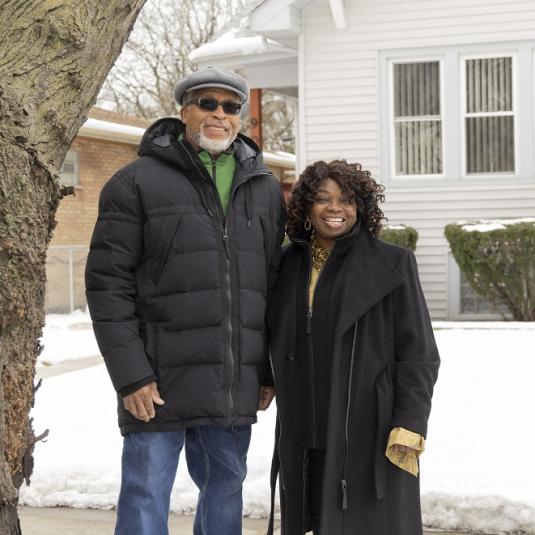Tips for Winterizing Your Home
As temperatures begin to dip, it's important to start making sure your home is ready for winter so that you can keep the cold out and your heat bill down. There are plenty of things that you can do to prepare that will make a big difference and are either free or low-cost. Below are the top 10 tips for making sure your home – and your wallet – are protected against the cold this year.
- Clean your gutters: Clogged gutters can cause water to back up and then freeze once temperatures drop, resulting in icicles and ice dams. Keeping gutters clear ensures that melting snow runs off your roof and doesn't get trapped and damage your gutters. The average cost to hire help ranges from $119 to $228. If you’re able to do the work yourself, it’s a free way to protect your home.
- Protect indoor pipes: A burst pipe can cost $500 to repair and up to $3,000 in additional damage. Pipe insulation – which can be self-installed around exposed copper or PVC water pipes under your sinks, in attics and in crawl spaces – can help protect them. The cost of pipe insulation is as low as 50 cents per linear foot.
- Install window insulation film: If you don't have storm windows to replace screens in the winter, putting up window insulation film can keep up to 70% of heat from leaking out of the windows. Each insulation film kit costs only $5-$15 and comes with instructions on how install the film yourself.
- Replace filters in your heating system: Changing the filters in your central heating system can improve its efficiency and longevity significantly, while also saving you money on your heating bills. A new pack of filters costs $20-$35, and you can replace them yourself.
- Flush your water heater: Over time, sediment can collect at the bottom of your water heater and hinder its efficiency. By flushing your water heater through the drain valve, you can remove the sediment and ensure the heater is functioning at its best. And if you do it yourself, the process is completely free.
- Use Draft Guards: Because heat can escape under the door in drafty rooms, placing draft guards by the doors is a low-cost (or free) way prevent heat loss and keep you from wasting energy. Draft guards can be purchased for $10-$20 dollars, but rolled towels can also be used as analternative.
- Put up a Chimney Balloon: In the winter, chimney’s can be a huge source of heat loss. If you’re not using your chimney, plugging it up with a chimney balloon – which costs $25-$60 depending on its size – is a great way to keep drafts out and heat in.
- Use Weatherstrip Tape: Ensuring your windows and doors are tightly seal with weatherstripping tape can help eliminate drafts and keep heat from escaping out any cracks. This will help you save energy throughout the winter – and it only costs $5-$10 per roll.
- Secure Outdoor Water Sources: Be sure to drain garden hoses and sprinklers and store them before the temperature dips below freezing. In addition, shut of the water-supply valve in your home that feeds hose bibs, and then turn on the outdoor spigot so that any water trapped inside drains out. This will prevent trapped water from freezing and causing a burst hose or pipe.
- Buy a Programmable Thermostat: According to the US Department of Energy, you can save up to 1% on your energy bill for every degree you lower your home’s temperature during the winter. Buying and installing a programmable thermostat will save you money by automatically reducing the temperature when you’re not home. Basic versions of these thermostats cost around $35-$60.
Using Your Capital Reserve Account to Offset Larger Costs
The majority of BlueHub SUN mortgages includes a special fund you set aside to cover surprise home expenses. If you learn that something large needs to be replaced while you get your house ready for winter – like the water heater – your Capital Reserve Account can help cover cost.


